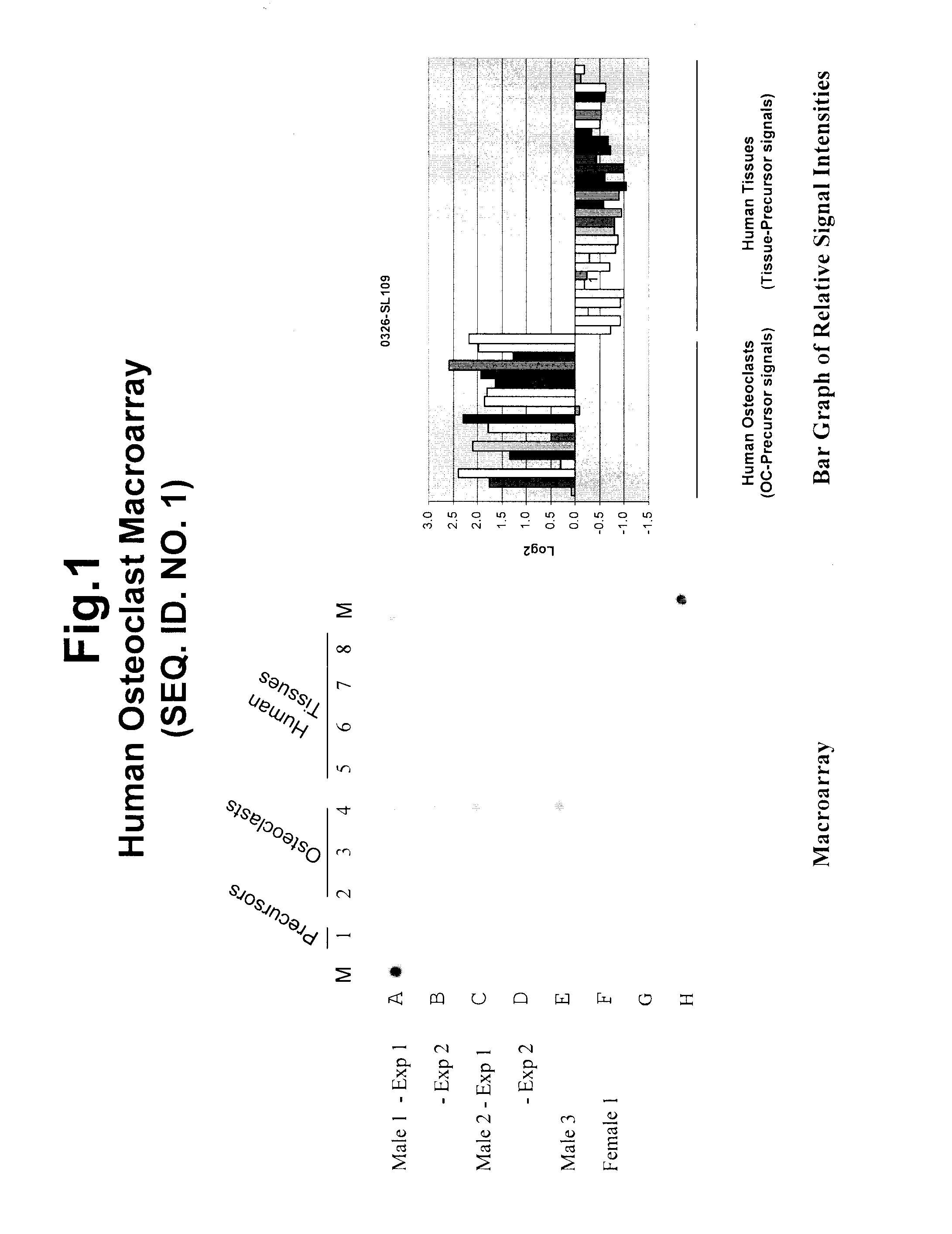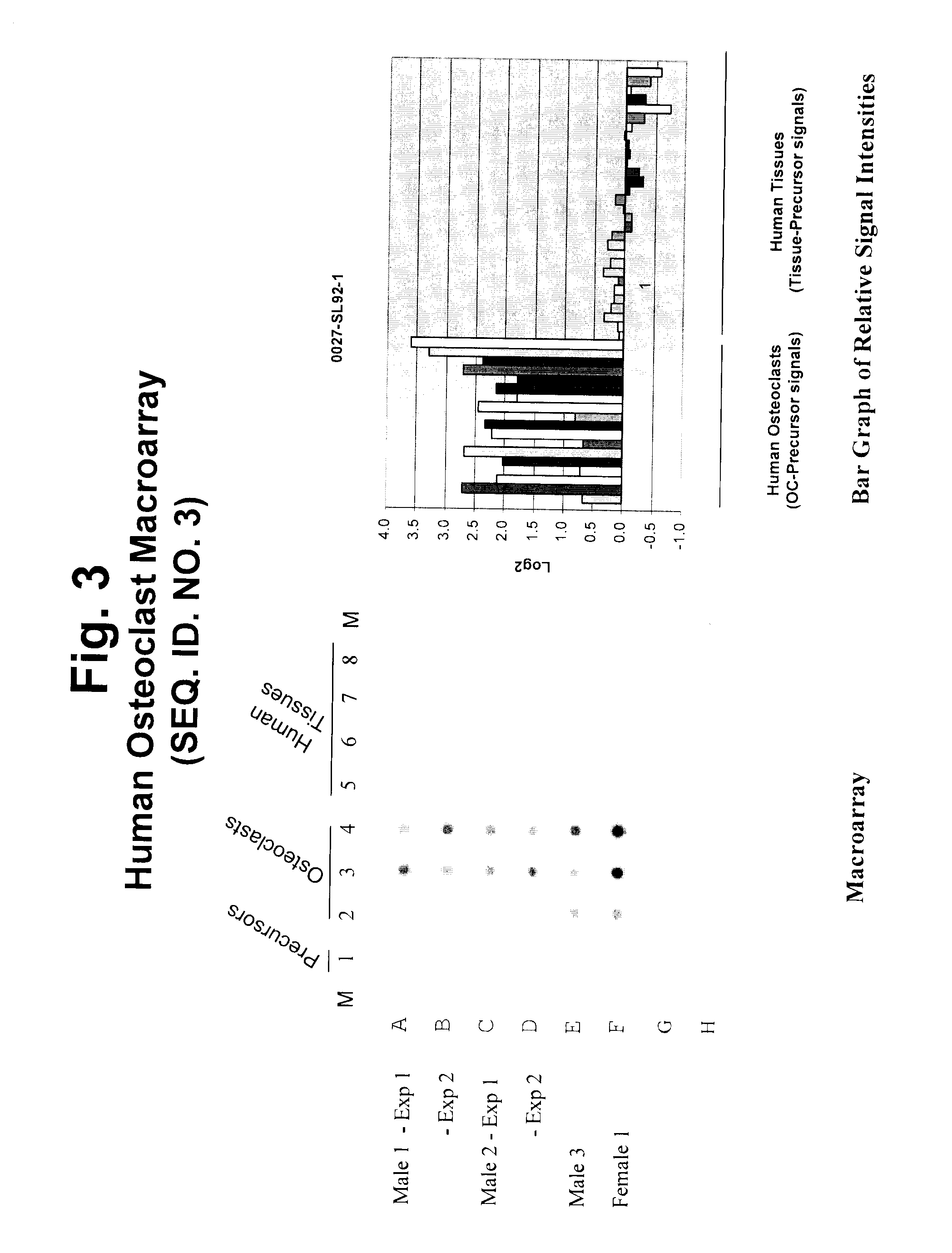Polynucleotides and polypeptide sequences involved in the process of bone remodeling
a polypeptide and bone remodeling technology, applied in the direction of peptide/protein ingredients, antibody medical ingredients, dna/rna fragmentation, etc., can solve the problems of difficult treatment of osteoarthritis, untreatable or treatable, and many diseases linked to bone remodeling that are poorly understood, so as to inhibit, prevent or lower osteoclast differentiation, promote osteoclast differentiation, and promote osteoclast differentiation.
- Summary
- Abstract
- Description
- Claims
- Application Information
AI Technical Summary
Benefits of technology
Problems solved by technology
Method used
Image
Examples
Embodiment Construction
[0348]The applicant employed a carefully planned strategy to identify and isolate genetic sequences involved in osteoclastogenesis and bone remodeling. The process involved the following steps: 1) preparation of highly representative cDNA libraries using mRNA isolated from precursors and differentiated intermediate and mature osteoclasts of human origin; 2) isolation of sequences upregulated during osteoclastogenesis; 3) identification and characterization of upregulated sequences; 4) selection of upregulated sequences for tissue specificity; and 5) determination of knock-down effects on osteoclastogenesis. The results discussed in this disclosure demonstrate the advantage of targeting osteoclast genes that are specific to this differentiated cell type and provide a more efficient screening method when studying the genetic basis of diseases and disorders. Genes that are known to have a role in other areas of biology have been shown to play a critical role in osteoclastogenesis and o...
PUM
| Property | Measurement | Unit |
|---|---|---|
| pH | aaaaa | aaaaa |
| concentration | aaaaa | aaaaa |
| mechanical | aaaaa | aaaaa |
Abstract
Description
Claims
Application Information
 Login to View More
Login to View More - R&D
- Intellectual Property
- Life Sciences
- Materials
- Tech Scout
- Unparalleled Data Quality
- Higher Quality Content
- 60% Fewer Hallucinations
Browse by: Latest US Patents, China's latest patents, Technical Efficacy Thesaurus, Application Domain, Technology Topic, Popular Technical Reports.
© 2025 PatSnap. All rights reserved.Legal|Privacy policy|Modern Slavery Act Transparency Statement|Sitemap|About US| Contact US: help@patsnap.com



